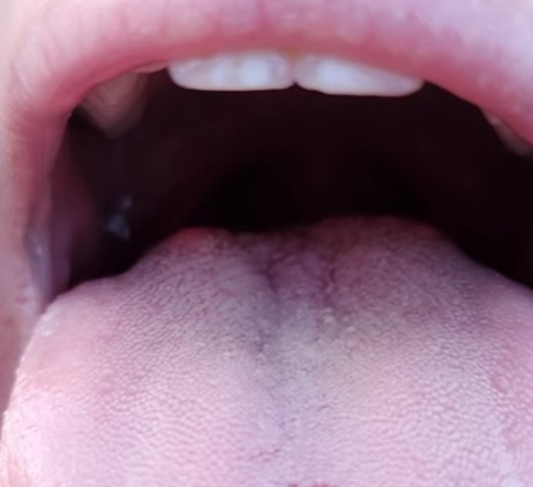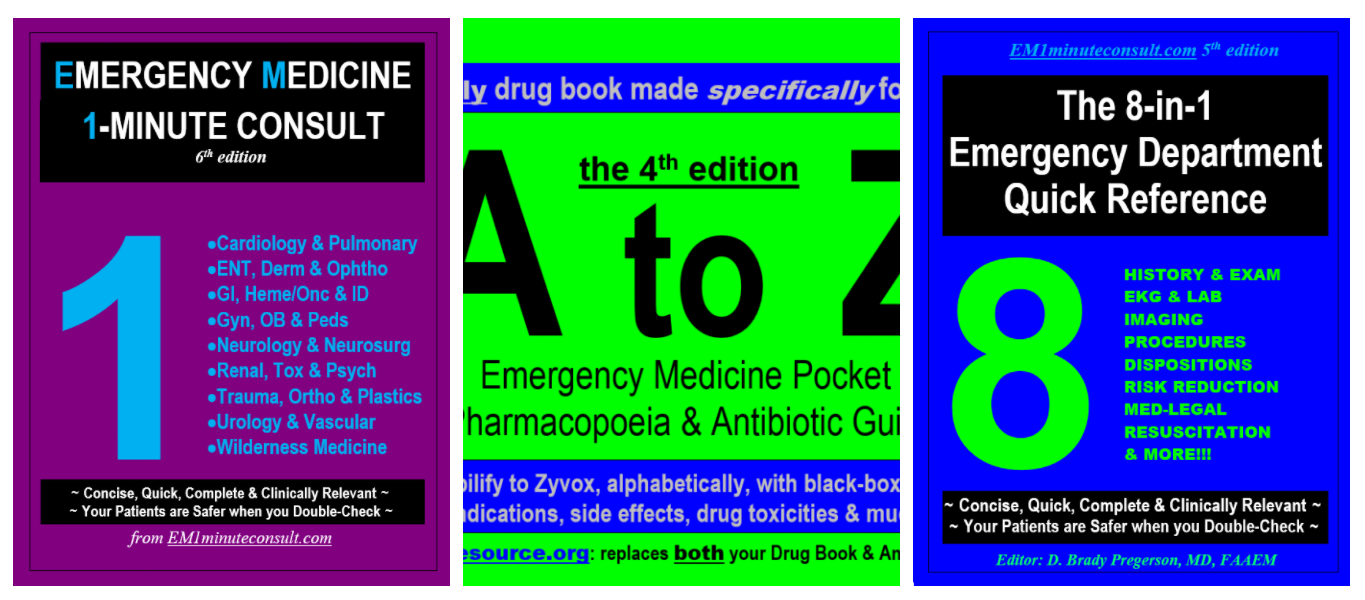History of Present Illness: A woman in her late 30’s with no PMH comes to the ED by medics for sudden throat/tongue pain and swelling and a rash after eating fish. In triage they gave her Benadryl, Pepcid and Decadron and sent her back to the main ED. It’s the end of your shift and you weren’t going to see another patient but he nurse asks you to come to the bedside to see if you think the patient needs Epi for anaphylaxis.
Physical Exam: vital signs are normal. Face is red. Tongue is shown below

What should you order?
- A) Epi, more antihistamines and steroids
- B) Just Epi
- C) Just antihistamines
- D) Just steroids
SCROLL DOWN FOR ANSWERS & 1-MINUTE CONSULT
<<<<<<<<<<<<<<<<<<<<< ADVERTISEMENT & SPACER >>>>>>>>>>>>>>>>>>>>>
**********************************************************************************
THE EMERGENCY MEDICINE POCKETBOOK TRIFECTA

Emergency Medicine 1-Minute Consult, 5th edition
A-to-Z EM Pharmacopoeia & Antibiotic Guide, NEW 5th edition
8-in-1 Emergency Department Quick Reference, 5th edition
************************************************************************************
<<<<<<<<<<<<<<<<<<<<<<<<< END SPACER >>>>>>>>>>>>>>>>>>>>>>>>>
ANSWER: What should you do next?
- A) Epi, more antihistamines, steroids
- B) Just Epi
- C) Just antihistamines – CORRECT – this is not anaphylaxis or even an allergy, but rather a fairly classic case of Scombroid.
- D) Just steroids
1-Minute Consult on SCOMBROID:
- Clinical: Facial flushing, HA, metal taste, burning mouth/throat, V/D > abdo cramps, SOB, vasovagal
- Causes: Tuna, mahi-mahi, mackerel, sardine… Onset 10-90 minutes, Duration: 3-36h
- Treatment: H1 & H2 blockers, Lasts 3-36h. Can mimic anaphylaxis
CASE CONCLUSION: This was Scombroid mimicking anaphylaxis
